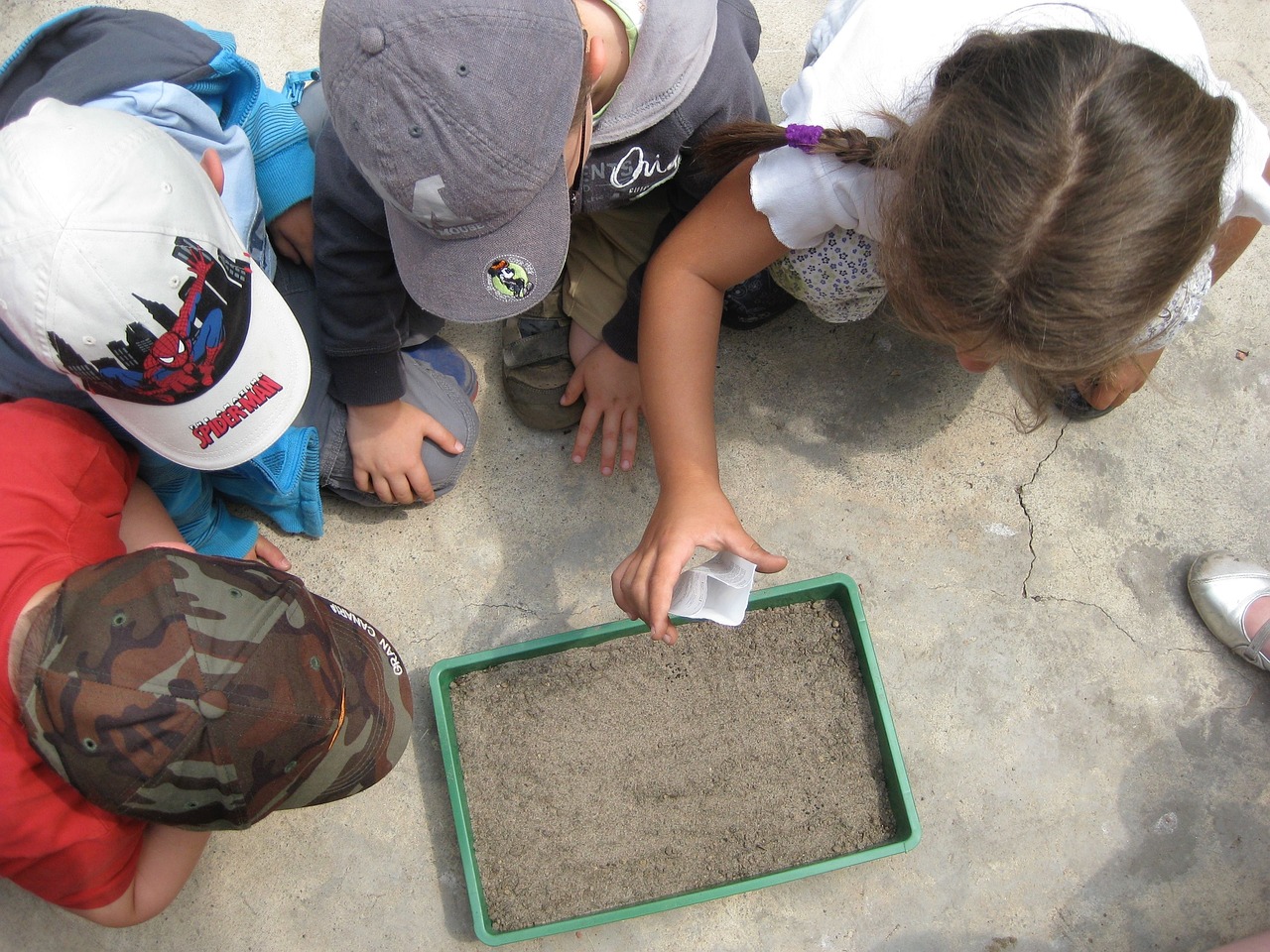Hey everyone! Let’s dive into the fantastic world of environmental education together. In this article, we’ll explore the many ways it benefits not just us, but our planet as a whole. From fostering a deeper connection with nature to empowering us with the knowledge to make greener choices, environmental education is a powerful tool for creating a sustainable future. Whether it’s through hands-on activities, classroom lessons, or community projects, we’ll discover how learning about our environment transforms us into more responsible and informed global citizens. Join us as we uncover the profound and lasting impacts of environmental education! Have you ever wondered what the benefits of environmental education are? As we navigate through an era where the health of our planet is in dire straits, understanding the importance of environmental education has become more crucial than ever. Let’s explore the multifaceted advantages of educating ourselves about the environment and how it positively affects individuals, communities, and the world at large.

Understanding Environmental Education
What Is Environmental Education?
Environmental education refers to organized efforts to teach individuals about the natural world and how to conserve it. This type of education encompasses a variety of disciplines, including biology, ecology, geography, and social sciences. It can occur in formal settings like schools and universities or informal settings such as community workshops and public campaigns.
History and Evolution
Environmental education dates back to the early 20th century but has gained significant traction in recent decades. Initially focused on simply appreciating nature, it has evolved to include more critical and action-oriented approaches. These methods aim to equip people with the skills and knowledge necessary to confront environmental challenges.
Benefits for Individuals
Enhanced Awareness and Knowledge
Environmental education provides a deeper understanding of how natural systems work and how human behaviors impact these systems. This increased awareness is the first step towards creating a more environmentally conscious society.
Critical Thinking and Problem-Solving Skills
Through environmental education, we develop critical thinking skills and the ability to solve complex problems. Whether it’s through hands-on activities or in-depth case studies, this type of education necessitates creative solutions to pressing environmental issues.
Connection with Nature
Learning about the environment fosters a direct connection with nature. From field trips to natural reserves to community gardening projects, these hands-on experiences cultivate a sense of stewardship.
| Benefit | Description |
|---|---|
| Awareness | Increased understanding of ecosystems and human impact |
| Critical Thinking | Improved ability to solve complex problems |
| Connection | Direct, hands-on experiences with nature |
Health and Well-being
Understanding and spending time in nature have direct health benefits. This includes reduced stress levels, improved mood, and even enhanced cognitive function. Educating ourselves about the environment often leads to more time spent outdoors, which is beneficial for both mental and physical health.
Benefits for Communities
Community Engagement
Environmental education often involves collaborative projects that bring communities together. Whether it’s a local clean-up or a community garden, these initiatives foster a sense of unity and shared purpose.
Sustainable Practices
With increased knowledge about the environment, communities are more likely to adopt sustainable practices. This can range from recycling and composting programs to the implementation of green infrastructure like rain gardens and permeable pavements.
Economic Benefits
Sustainable practices often lead to economic benefits. For example, energy-efficient structures can lower operational costs for businesses and local governments. Moreover, community-based environmental projects can create job opportunities in fields like conservation and renewable energy.
| Benefit | Description |
|---|---|
| Community Engagement | Projects that bring people together |
| Sustainable Practices | Adoption of eco-friendly habits |
| Economic Benefits | Cost savings and job creation |
Benefits for the Environment
Conservation of Resources
One of the direct benefits of environmental education is the conservation of natural resources. Educated individuals and communities are more likely to engage in activities that protect water, air, and soil quality.
Biodiversity Protection
Understanding the importance of biodiversity helps in creating measures that protect various species and their habitats. From planting native species to conserving wetlands, these actions contribute to maintaining ecological balance.
Climate Change Mitigation
Educating ourselves about climate change leads to more informed decisions regarding energy consumption and waste management. This collective effort helps in reducing greenhouse gas emissions and mitigating climate change impacts.
| Benefit | Description |
|---|---|
| Resource Conservation | Activities that protect natural resources |
| Biodiversity Protection | Measures to safeguard species and habitats |
| Climate Change Mitigation | Informed decisions to reduce carbon footprint |

Educational Institutions and Environmental Education
Role of Schools
Schools play a pivotal role in spreading environmental education. Curricula that include lessons on sustainability, recycling, and conservation raise environmentally aware generations. Field trips and eco-clubs offer practical exposure to complement theoretical knowledge.
Higher Education
Universities and colleges are increasingly offering specialized courses and degrees in environmental studies. These programs provide in-depth research opportunities and develop expertise in various aspects of the environment, from climate science to environmental law.
Informal Education
Outside formal educational settings, workshops, online courses, and public campaigns are effective avenues for environmental education. These platforms are often more accessible and can reach a broader audience.
Government and Policy Support
National Initiatives
Governments worldwide are recognizing the importance of environmental education. National policies and programs, such as the U.S. Green Ribbon Schools initiative, promote sustainable practices in educational institutions.
International Efforts
International organizations, including UNESCO and UNEP, have been pivotal in advocating for environmental education globally. Programs like the UNESCO Global Action Programme on Education for Sustainable Development aim to integrate sustainable practices into education systems worldwide.
Funding and Resources
Ensuring the success of environmental education requires adequate funding and resources. Grants, subsidies, and public-private partnerships can significantly enhance the reach and quality of educational programs.
| Support Type | Description |
|---|---|
| National Initiatives | Government programs to promote sustainability |
| International Efforts | Advocacy by global organizations |
| Funding and Resources | Financial support for educational programs |

Technological Advances in Environmental Education
Digital Platforms
With the advent of digital platforms, environmental education has become more accessible. Online courses, webinars, and educational apps provide invaluable resources for learners of all ages.
Virtual Reality (VR) and Augmented Reality (AR)
Technologies like VR and AR offer immersive educational experiences. For instance, virtual field trips can transport students to rainforests or coral reefs, providing a firsthand understanding of these ecosystems without leaving the classroom.
Data Analytics
The use of data analytics in environmental education allows for the monitoring and evaluation of both environmental conditions and educational outcomes. This data-driven approach helps in fine-tuning educational strategies and measuring their effectiveness.
| Technological Advances | Description |
|---|---|
| Digital Platforms | Online courses and resources |
| VR and AR | Immersive learning experiences |
| Data Analytics | Monitoring and evaluating impact |
Corporate Responsibility
Workplace Education
Many corporations are now incorporating environmental education into their employee training programs. This ranges from basic recycling information to more elaborate sustainability workshops and webinars.
Sustainable Business Practices
By educating their workforce, companies can more easily adopt sustainable business practices. This includes reducing waste, energy consumption, and carbon footprint, which not only benefits the environment but also enhances the company’s public image.
Community Outreach
Corporations can extend their reach by sponsoring community-based environmental programs. These initiatives not only promote environmental education but also help in building strong community relations.

Challenges and Opportunities
Barriers to Implementation
Despite its numerous benefits, there are challenges in implementing environmental education effectively. These challenges include lack of funding, insufficient resources, and sometimes, political resistance.
Cultural Sensitivity
Environmental education needs to be culturally sensitive to be effective. Understanding local customs and traditions can help in designing more relatable and acceptable educational materials.
Opportunity for Innovation
The challenges in environmental education also present opportunities for innovation. From developing new educational technologies to creating engaging community programs, there’s ample room for creativity and improvement.
| Challenge/Opportunity | Description |
|---|---|
| Barriers to Implementation | Funding and resource limitations |
| Cultural Sensitivity | Adapting education to local customs |
| Innovation | Creating new and effective strategies |
The Way Forward
Holistic Approach
A holistic approach to environmental education is essential. This means integrating environmental concepts into various subjects and life aspects. It also involves collaborative efforts from educational institutions, governments, corporations, and communities.
Continuous Learning
Environmental issues are ever-evolving, and so should our learning. Continuous education and staying updated with the latest research and practices are crucial for effective environmental stewardship.
Global Collaboration
Addressing environmental challenges requires global collaboration. Sharing resources, knowledge, and best practices across borders can significantly enhance the effectiveness of environmental education.

Conclusion
Environmental education is a potent tool for positive change. By increasing awareness, fostering community engagement, and promoting sustainable practices, it has far-reaching benefits for individuals, communities, and the environment. As we continue to face growing environmental challenges, investing in environmental education becomes not just beneficial but essential.
So, let’s embark on this journey of learning and make a collective effort to nurture and protect our planet for future generations. What benefits of environmental education have you experienced or witnessed? Let’s keep the conversation going and build a more sustainable and informed world together.



